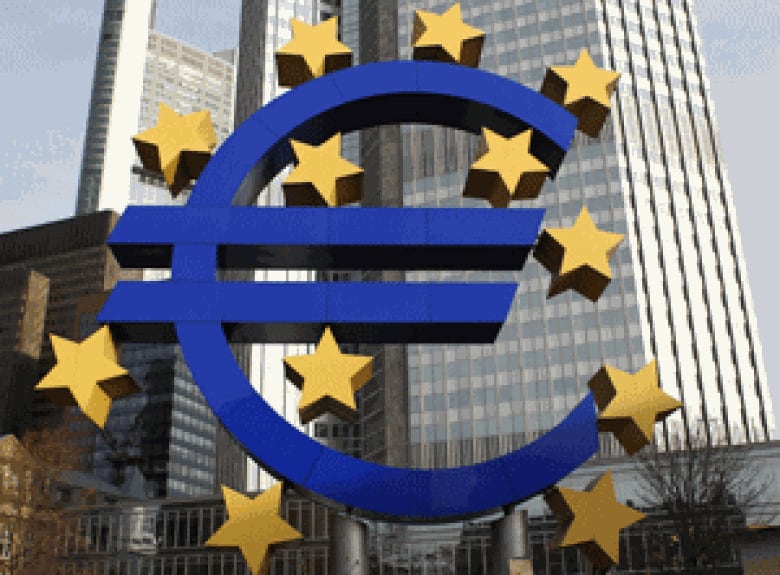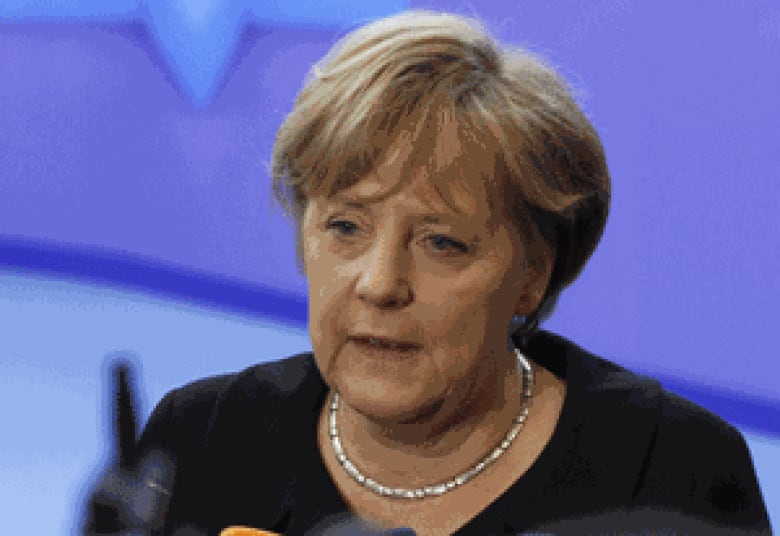
The current debt crisis in Greece and other Eurozone countries has cast an existential cloud over the 20th anniversary of the Maastricht Treaty, the agreement signed on Feb. 7, 1992 that created the European Union and established the euro.
The euro is the common currency used by 17 of the 27 members states of the European Union. It was introduced as a so-called unit of account — i.e. currency used only in financial transactions on paper — in 1999 and as actual circulating banknotes and coins in January 2002.
Any country that enters the EU must commit to eventually adopting the euro once it is able to meet the necessary criteria. Only Denmark and the U.K. have been granted exemptions to this rule and have opted out of the euro completely. Sweden has committed to adopting the euro in the future, but it hasn’t yet made the necessary legislative changes and exchange rate adjustments required for entry into the “eurozone” — the countries using the euro.
Eurozone countries
Germany
France
Italy
Spain
Portugal
Ireland
Austria
Finland
Netherlands
Greece
Belgium
Luxembourg
Slovenia
Cyprus
Malta
Estonia
Slovakia
Eurozone population: 332 million
EU population: 503 million
In the countries that make up the eurozone, the euro has replaced the national currency. Some national banks will allow you to exchange the old currency indefinitely, but others have set an expiration date on how long they will accept it. The Bank of France, for example, will exchange francs only up until Feb. 17, 2012.
Countries that don’t use the euro generally don’t accept it for regular cash transactions, although some large department stores and tourist-dependent businesses in the U.K., for example, have been accepting payment in euros.
How to join
There are five main criteria countries must meet to join the eurozone. These are often referred to as the Maastricht criteria after the Maastricht Treaty, which laid out the integrated structures of the European Union and set a timetable for the adoption of a single currency.
Maastricht criteria
- Inflation: the rate of inflation may not be more than 1.5 percentage points above the average rate of inflation of the three EU member states with the lowest inflation over the previous year.
- Budget deficit: national budget deficits must be at or below three per cent of GDP.
- Public debt: national public debt must not exceed 60 per cent of GDP. A country can still join if its debt exceeds this level provided it is falling steadily.
- Interest rates: long-term interest rates must not vary by more than two percentage points from the average interest rates of the three EU member states with the lowest inflation over the previous year.
- Exchange rates: exchange rates must remain within the accepted margin of fluctuation laid out in the Exchange Rate Mechanism (ERM) for two years prior to entry. (The ERM is the mechanism by which EU members linked their currencies in order to prevent large fluctuations prior to the adoption of the euro.)
The reality is that many current eurozone members do not meet all the Maastricht requirements, and many blame Europe’s current debt problems on a failure to take swift enough action against countries that failed to adhere to the debt and deficit ceilings.
The European Commission estimates that the average debt burden for the euro area will be 88 per cent of GDP in 2011 and 90.4 per cent in 2012 — far above the required 60 per cent cap. Germany, the largest euro economy, is forecast to have debt equivalent to 81.7 per cent of GDP in 2011 while Greece’s debt is expected to rise to 150.9 per cent of GDP. The average budget deficit for the euro area is expected to be 4.1 per cent of GDP in 2011 and as high as nine or 10 per cent in Greece.
Eurozone enforcers
There are several organizations in charge of keeping Europe’s unified currency and, more broadly, its integrated monetary policies on track.

- European Central Bank (ECB) — based in Frankfurt, it sets monetary policy for the eurozone, issues euro banknotes, sets interest rates, keeps inflation low.
- European Council — made up of the heads of state of EU member states, it sets the EU’s main policy orientations.
- Council of the EU (also known as the Council or the Council of Ministers) — part of the EU legislature, made up of one minister from each member state. There are 10 council configurations based on policy areas. The economic configuration co-ordinates EU economic policy and decides whether a member state may adopt the euro.
- European Commission — it is the main body in charge of enforcing EU regulations and policies and also proposes legislation. It monitors eurozone members’ performance and compliance.
- Eurogroup — an informal grouping of euro area finance ministers that co-ordinates and monitors economic and budgetary policies and represents the euro area at international forums.
EU member states also adopted a Stability and Growth Pact in 1997 intended to get countries to adhere to the Maastricht Treaty and maintain common EU-wide fiscal policies. It contains something called the excessive deficit procedure, or EDP, that kicks in once a member state exceeds the three per cent debt ceiling and establishes a deadline by which corrective action must be taken.
However, it also says that the procedure won’t be used if the excess deficit is temporary or exceptional and within range of the ceiling. The recent debt crisis has forced the eurozone to adjust the Maastricht criteria and set new debt targets for countries like Greece, whose revised budget deficit target, for example, was upped to 7.5 per cent of GDP.
Advantages and disadvantages of a common currency
| Advantages | Disadvantages |
| Ensures low, stable inflation and low interest rates. | Vast differences in economic performance between countries make it hard to implement one-size fits all fiscal policies. For example, the inflation level set by the European Central Bank may not work well for all eurozone counties. This also means that weaker economies can pull down stronger economies, as is the case in the current debt crisis, with heavily indebted countries like Greece negatively impacting the stronger economies of Germany and France. |
| Eliminates currency exchange costs and fluctuations. | Cost of introducing the currency is significant. |
|
Facilitates easier travel and trade between states. |
Deficit limits restrict what fiscal tools governments can use to combat recession, unemployment and other economic problems that may be specific to their situation. |
|
Increases price transparency — consumers can more easily compare prices across borders. |
Has deflationary effects. Adhering to the strict deficit and inflation caps can force countries to deflate their economies. The spending cuts Estonia, which joined the eurozone in January 2011, had to make to meet the Maastricht criteria resulted in unemployment rising from 5.5 per cent in 2008 to 16.9 per cent in 2010. |
| A single regional currency gives EU greater weight on world stage. | |
| Better protects against external economic shocks like oil price rises or upheaval in currency markets. | |
| Attracts foreign investment and trade to the eurozone. |
Common currency vs. common market
While not all countries in the European Union are part of the eurozone, they are all part of a common market, meaning they have abolished trade barriers, customs tariffs, border controls and other impediments to the free movement of goods, capital, labour and services across national borders.
In some areas, such as product regulation and consumer protection, the EU has adopted a policy of mutual recognition of national rules, meaning products legally sold in one country can be sold in any other member state.

While European member states attempt to co-ordinate their broader economic policies, state governments retain control over taxes, government spending, labour, pensions and capital markets.
The raison d’être of the EU has always been some form of common market. The entity itself originated as the European Coal and Steel Community in 1951 as a way of creating a common market for coal and steel among Belgium, the Federal Republic of Germany, France, Italy, Luxembourg and the Netherlands. That evolved into the European Economic Community six years later, which expanded the common market to other goods and services, and by the 1960s, the six countries had abandoned customs duties and adopted common policies on trade, agriculture and in other areas.
It wasn’t until the 1970s that the union expanded beyond economic imperatives to include social and environmental policies and, in 1979, the first elected European Parliament. That year, it also adopted the European Monetary System, which aimed to keep currency fluctuations in check by pegging exchange rates to the European Currency Unit (ECU), a currency that existed only as an accounting unit and was based on a weighted average of the currencies of the by then nine countries that made up the European Economic Community.
Exchange rates had to be changed by mutual agreement and could fluctuate only within a narrow margin established under the Exchange Rate Mechanism the member states had created.
Today, the EU has common policies on everything from air pollution to immigration, but, as the recent debt crisis has made all too clear, it still lives and dies on the basis of its economic integration.



